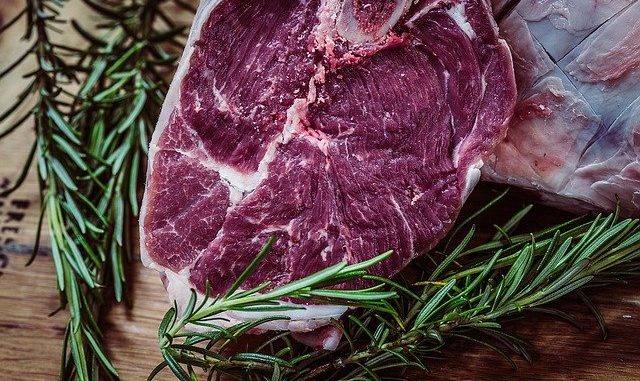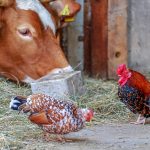
Meat is one of those foods which is slowly losing its position on the kitchen table or so you might think. Whilst many consumers are starting to look seriously at changing their lifestyle and ditching meat so as to adopt a vegetarian and vegan stance, there is still plenty of interest in this food. Meat is not finished with yet. We often look at vegan options on this web-site because meat hybrids are so relevant. This article though looks at what there is about such food that makes it so desirable in many people’s eyes.
What Is Meat?
A general definition of meat is that it is skeletal muscle from mammals and birds with their naturally associated fat and connective tissue from which the larger tendons have been removed.
Other definitions refer to all parts of an animal that can be consumed. The definitions tend to be variable depending on how food is processed too.
Muscle And Meat
Muscle is an ‘in vivo‘ tissue whilst meat for consumption is the same type of tissue that has undergone extensive changes post mortem. Meat itself becomes a material, a food commodity if you like.
Lean meat has a nutritional composition where most of it is 75% water and 22% protein. That protein content is high is relative terms. The remainder are lipids such as phospholipids with glycogen, the storage carbohydrate, various vitamins and minerals.
Global Production And Consumption
Over millenia, humans have enjoyed consuming meat and of that fact, there is no denying it. If you look at global meat production, (according to the UN Food and Agriculture Organization (FAO) who have produced a web-site called OurWorldInData.org/meat-production), there has been a steady rise in global meat consumption from 1961 where the amount was 7 million tons to a current value just over 300 million tons in 2018. That is an extraordinary increase and the levels are only just beginning to tail off both only slightly. Interestingly, Asia is the largest consumer followed by Europe. You might have thought it would be North America but not so. Asia and Europe as a continent account for something like 55% of meat consumption at this moment in time. The remaining 45% is North, Central and South America and small amounts from Africa and Oceania.
As opposed to meat consumption, meat production naturally has to keep pace with consumption. From 1980 to the present day, China alone now produces 80 million tons, with the European Union, the USA and South America producing just over 40 million tons each. One of the biggest drivers in the meat economy is Chinese desire for all sorts of meat foods so it comes as no surprise that they should be one of the biggest producers.
Another interesting result comes form analysis of the meat supply per person. In 2017 when the data was last presented, it shows that the USA, Australia, Argentina and Spain were producing between 140kg and 160kg of meat per head of population. Only in Africa and India was meat production up to 20kg per head of population. There seems to be quite a disparity in the amounts produced around the world.
World Meat Production By Livestock
Different types of meat account for over 300 million tons consumed in 2018. The vast majority is poultry i.e. chicken and pork. Both meats are produced to a level of 125 million tons each. The remainder is beef and buffalo, sheep and goat, horse, wild game etc.
Beef and buffalo make 70 million tons in total for 2018. The remainder is relatively small.
Meat Quality
Meat quality is defined by a large number of quality attributes but this changes throughout the supply chain as it moves from farm to being processes.
The primary producer or farmer will judge quality on the basis of the following to do with production economy
- weight,
- flesh and fat cover
- growth rate
- conformation of the carcass
- feed efficiency
At the abattoir, the factors for judgement are similar but more detailed:
- weight
- yield
- conformation
- cleanliness of the muscle
- fat content
- age & sex
- level of injuries
- colour
- meat pH
- tracing
- marbling
At the meat processing plant, the quality indicators are slightly different again but related to recipe for a product that will be created:
- fat content
- water-holding capacity
- yield
- pH
- traceability
- levels of sustainability
The common features are attributes generally attributed to the economy of meat supply although how it is to be used takeover.
The remaining attribute of quality is the one that consumers perceive and perhaps the most important for anyone considering creating a meat analogue or hybrid.
Consumer Perception Of Quality
Perception of quality is split into two types of factor: intrinsic and extrinsic.
Intrinsic quality factors are split further into three groups. The first relates to meat at the point of sale such as its level of fat, colour which are attributes regarded in equal measure. Then in order of concern it is drip loss and nutritional content.
When meat is cooked which is the second factor, we look at the smell and aroma of the cooking meat, the degree of shrinkage and what type of exudate is generated.
The final intrinsic attribute is sensory again – tenderness, flavour and juiciness when we come to eat the product, cooked or uncooked.
Extrinsic quality factors that are becoming very important relate to issues such as animal husbandry, whether it is outdoor reared, food safety, traceability and even if it is organically produced. Neither one attribute dominates over another.
What Are The Meat Quality Attributes In Research
Meat quality attributes are related to a large extent to consumer perceptions of quality but the main ones to consider are always:-
- level of tenderness when eating and cutting, and juiciness
- colour and how it retains colour as well as changes during storage and cooking. pH affects this too – as the pH changes from 5.5 to 7, the colour changes from pale brick red to increasingly dark red and almost deep brown.
- water-holding capacity (WHC) – about 75 to80% and important for juiciness and tenderness.
- pH – both early on and at end of shelf-life. The pH is about 5.5 after slaughter and then rises to about pH7 at the point of use in processing.
- sensory attributes such as taste and aroma based on a sensory panel. Its the final and best test measure.
These measures are also used on any meat and fish too!
Final quality depends on the consumer though and whether they can cook it properly.
The Supply Chain
The supply chain can be listed as:
(1) Production where farmers raise the animals
(2) Slaughter – where animals are held, killed, and then cleaned usually in the abbatoir.
(3) Processing – where animal meat is cut up and value is added by the addition of other forms of processing such as conversion into other products.
(4) Distribution – where the meat is sold through a wholesale distributor.
(5) Retail – an important point for selling and further processing.
(6) The key end point is with the consumer. This is the cooking and eating phase at the point of consumption. Its critical for consumers to know at what temperature meat is to be cooked at and how this varies for each type of species eaten. Its also important for them to know how cooking affects both safety and palatability of the final product.
If the supply chain is operated perfectly then the consumer should accept the the product as is. It’s cooking which dictates how well a consumer will accept a meat food and in many instances this attribute will also apply to faux meat and vegan ‘meat-style’ foods.
The Danish Meat Research Institute looked at how the cooking time for pork chops affected the consumers perception of quality. There were 30 consumers invited to sample the chops cooked for four different times, 5 to 8 mins, 9 to 12 mins, 13 to 18 mins and 19 to 20 minutes. The most popular cooking time was between 5 and 18 minutes depending on well done the meat should be in terms of tenderness etc. However there was a dramatic cut-off point where only a few eaters preferred the chops cooked for 19 minutes or more.
Nutritional Value
The four main nutritional factors of meat are:-
- Amino acid content especially the essential ones which have high biological value. These will come from muscle protein and some other related proteins.
- The fat content which is mainly fatty acid composition and degree of saturation.
- The amount and type of vitamins especially B-vitamins. The key one is vitamin B12 or cobalamin.
- Various minerals such as iron, selenium and zinc – a key source of these.
The fat composition is highly influential on consumer perception. The fatty acid composition in the feed influences its composition in the meat and is a reflection of which type of animal it is derived from. Feed influences are more important for monogastric animals such as pig, fish and poultry as opposed to ruminants such as lamb and beef meats.
Plenty of research has shown that grass fed lamb and beef have more polyunsaturated fatty acids ( PUFAs) and especially the healthy fatty acids such as the omega-3 fatty acids.
The proportion of PUFAs drops with increasing levels of animal fat content or hull. Leaner animals have a higher ratio of polyunsaturated fatty acid to saturated fatty acid content compared to fatter animals. Leaner animals have a higher proportion of phospholipids in the cell membranes within their muscle fibre than any other type of fat.
What Influences The Taste And Aroma Of Meat?
The fat content for a start. Most of the aromas of meat are derived from lipophilic compounds which come from the degradation and breakdown of fat components in the meat during cooking.
The nature of the way the animal was fed is known to make a difference too. Grass fed animals have a more gamey taste compared to those animals fed on a concentrate. Forest animals supposedly have a better flavour hence the reasons of interest in types of rearing.
The older the animal too, the stronger taste.
When the meat is processed, levels of tenderization affects the degree and intensity of taste. If the meat is more tender, it tastes stronger and ‘better’. Hanging and aging also change the flavour and the claim is that such practices improve flavour quality. One of the reasons is due to protein breakdown as peptides are released which contribute to umami notes.
Packaging has a big part to play in flavour perception. There are many types of atmospheric packaging used to try and improve meat quality. High oxygen or MAP produces oxidation of meat pigments which creates a more ‘meat-like’ appearance but unsaturated lipids are present which leads to the creation of rancid and objectionable flavours. Vacuum packaging produces an acidic taste to meat – certainly a change which might not be so desirable either.
Cooking also affects the production of aromas too because free amino acids react with fats and lipids to generate Maillard products which are highly complex but critical to sensory perception. One of the most effective methods which vegans and vegetarians need to master is the long time-low temperature (LTLT) method which has convinced meat eaters of the quality of a meat product compared to a meat hybrid. Lots of free amino acids are generated during this type of ‘sous-vide’ cooking which adds greatly to meat flavour.
In time we hope to add more useful notes on the subject. It may help producers or vegan meat products to understand why real meat is still popular and why the amount being grown and produced is ever rising.

Leave a Reply